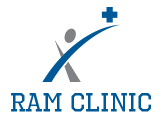Disease and conditions
- Definition
- Symptoms
- Causes
- Risk factors
- Complications
- Preparing appointment
- Tests and diagnosis
- Treatments and drugs
- Home remedies
Back pain is a common complaint. Most people in the United States will experience low back pain at least once during their lives. Back pain is one of the most common reasons people go to the doctor or miss work.
On the bright side, you can take measures to prevent or lessen most back pain episodes. If prevention fails, simple home treatment and proper body mechanics will often heal your back within a few weeks and keep it functional for the long haul. Surgery is rarely needed to treat back pain.
Symptoms of back pain may include:
- Muscle ache
- Shooting or stabbing pain
- Pain that radiates down your leg
- Limited flexibility or range of motion of the back
- Inability to stand up straight
Back pain often develops without a specific cause that your doctor can identify with a test or imaging study. Conditions commonly linked to back pain include:
- Muscle or ligament strain. Repeated heavy lifting or a sudden awkward movement may strain back muscles and spinal ligaments. If you're in poor physical condition, constant strain on your back may cause painful muscle spasms.
- Bulging or ruptured disks. Disks act as cushions between the individual bones (vertebrae) in your spine. Sometimes, the soft material inside a disk may bulge out of place or rupture and press on a nerve. The presence of a bulging or ruptured disk on an X-ray doesn't automatically equal back pain, though. Disk disease is often found incidentally; many people who don't have back pain turn out to have bulging or ruptured disks when they undergo spine X-rays for some other reason.
- Arthritis. Osteoarthritis can affect the lower back. In some cases, arthritis in the spine can lead to a narrowing of the space around the spinal cord, a condition called spinal stenosis.
- Skeletal irregularities. Back pain can occur if your spine curves in an abnormal way. Scoliosis, a condition in which your spine curves to the side, also may lead to back pain, but generally only if the scoliosis is quite severe.
- Osteoporosis. Compression fractures of your spine's vertebrae can occur if your bones become porous and brittle
Anyone can develop back pain, even children and teens. Although excess weight, lack of exercise and improper lifting are often blamed for back pain, research looking at these possible risk factors hasn't yet provided any clear-cut answers.
One group that does appear to have a greater risk of back pain are people with certain psychological issues, such as depression and anxiety, though the reasons why there's an increased risk aren't known
If you have back pain that's lasted for at least a few days and isn't improving, make an appointment with your family doctor or primary care provider.
Here's some information to help you prepare for your appointment and what to expect from your doctor
Diagnostic tests aren't usually necessary to confirm the cause of your back pain. However, if you do see your doctor for back pain, he or she will examine your back and assess your ability to sit, stand, walk and lift your legs. Your doctor may also test your reflexes with a rubber reflex hammer.
These assessments help determine where the pain comes from, how much you can move before pain forces you to stop and whether you have muscle spasms. They will also help rule out more-serious causes of back pain.
If there is reason to suspect a specific condition may be causing your back pain, your doctor may order one or more tests:
- X-ray. These images show the alignment of your bones and whether you have arthritis or broken bones. X-ray images won't directly show problems with your spinal cord, muscles, nerves or disks.
- Magnetic resonance imaging (MRI) or computerized tomography (CT) scans. These scans can generate images that may reveal herniated disks or problems with bones, muscles, tissue, tendons, nerves, ligaments and blood vessels.
- Bone scan. In rare cases, your doctor may use a bone scan to look for bone tumors or compression fractures caused by osteoporosis.
- Nerve studies (electromyography, or EMG). This test measures the electrical impulses produced by the nerves and the responses of your muscles. This test can confirm nerve compression caused by herniated disks or narrowing of your spinal canal (spinal stenosis)
Most back pain gets better with a few weeks of home treatment and careful attention. Over-the-counter pain relievers may be all that you need to improve your pain. A short period of bed rest is OK, but more than a couple of days actually does more harm than good. Continue your daily activities as much as you can tolerate. Light activity, such as walking and daily activities of living, is usually OK. But, if an activity increases your pain, stop doing that activity. If home treatments aren't working after several weeks, your doctor may suggest stronger medications or other therapies.
